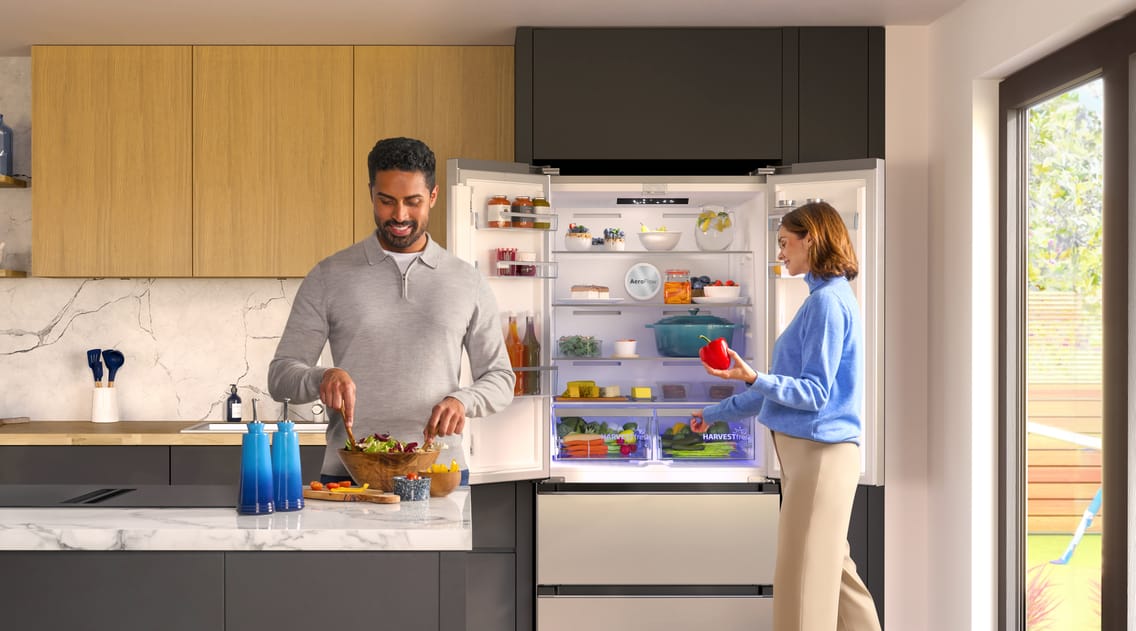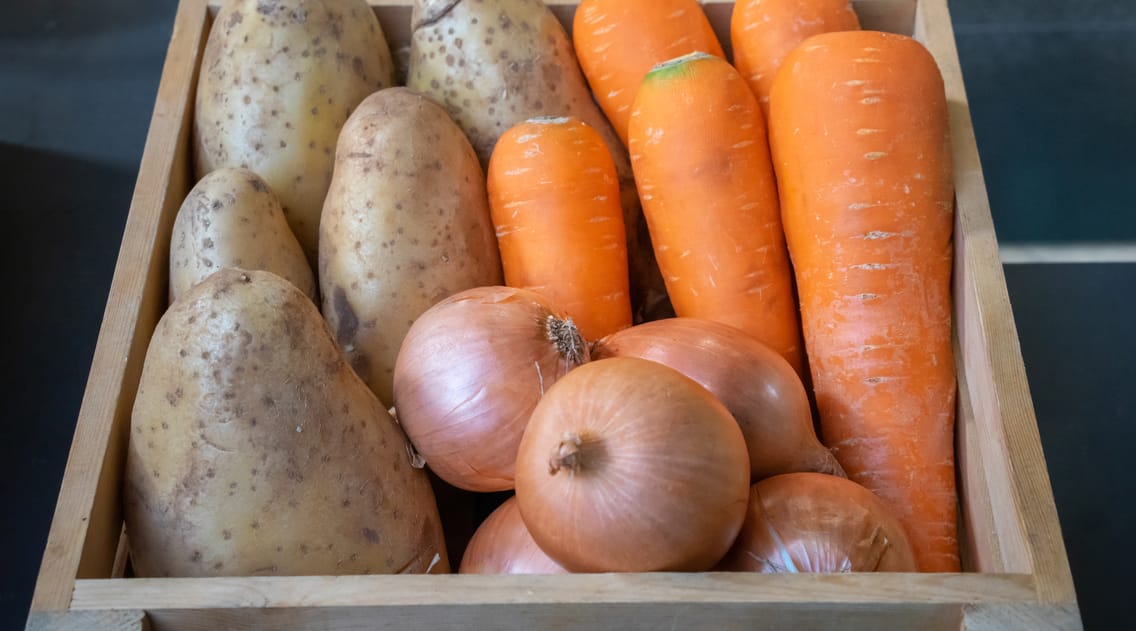Best Way To Keep Vegetables Fresh For Longer

Vegetables are an essential part of a healthy diet, but improper storage can lead to wasted food and money. Fortunately, Beko is here to share expert tips on how to store vegetables properly, ensuring they stay fresh and enjoyable for longer.
How long do fresh vegetables last?
Different types of vegetables have varying shelf lives, but here are the warning signs that indicate your produce has gone past its past its best:
| ✓ When to eat | ✗ When to discard | |
|---|---|---|
| Broccoli | Eat when they have a deep, rich green colour, and the stems are firm and solid | Discard when stems start to feel limp |
| Carrots | Eat when they are firm and crisp | Discard when they feel soft and limp, or have a white and grainy colour |
| Garlic | Eat when they feel firm and have an off-white colour | Discard when they look wrinkly or have a tan colour |
| Green beans | Eat when they are slender and firm | Discard when there are visible seeds, or when they become droopy or moist |
| Lettuce | Eat when the leaves are a dark green colour | Discard when they feel soggy, have become discoloured or have a rotten smell |
| Onions | Eat when they look clean and feel firm | Discard when they show signs of moisture or have soft spots |
| Potatoes | Eat when they have a firm feel and have an earthy smell | Discard if they have developed sprouts which are longer than a few centimetres (small sprouts are fine) |
All the following fruit should be refrigerated from the moment you bring them home:
- Apples – store them separately from other produce, as they emit ethylene gas, which can speed up ripening
- Cherries
- Citrus fruit like grapefruit, lemons, limes and oranges should be stored in a produce drawer
- Figs
- Longans
- Lychees
- Mangosteens
- Pomegranates
- Soft berries which includes blackberries, blueberries, cranberries, currants, grapes, raspberries and strawberries
However, the following fruit can be left at room temperature to ripen before refrigeration. Once perfectly ripe, they can be stored in the fridge for a few days to extend their freshness. Storing them too soon can affect their texture and flavour:
- Apricots
- Avocado
- Bananas (surprisingly, even if the peel darkens, the fruit inside remains fresh for a few days)
- Kiwis
- Mangoes
- Melons
- Nectarines
- Papayas
- Passionfruit
- Peaches
- Pears
- Persimmons
- Pineapples
- Plums
- Quince
The advanced technology featured in many of our refrigerators helps keep these types of vegetables, along with a variety of other foods, fresher for even longer.
Choose a Beko HarvestFresh™ fridge freezer and you will discover that the appliance’s crisper drawer is designed with three-colour light technology. This innovative setup simulates the natural, 24-hour cycle of the sun and means that vegetables contained in this drawer can preserve vitamins A and C for longer* by experiencing a similar setting to if they were still growing outdoors.
Our fridges with EverFresh+® technology use breathable smart textiles in the crisper drawers, for instance, so that food stored there can enjoy high humidity levels and reduced moisture loss.
How do you store fresh vegetables in the fridge?
As well as the innovative food-preserving technology found within many of our refrigerators, there are some other great ways to keep vegetables at their peak freshness for longer.
When you are next unloading your food shopping and putting vegetables into the fridge, keep the produce separate as much as possible. They should be kept away from the likes of tomatoes, bananas and avocados too, as these ripening fruits produce ethylene which will cause vegetables to ripen much quicker.
For food safety, always keep unwashed raw vegetables separate from ready-to-eat foods, whether storing or preparing them.
Store salad in the fridge inside a ventilated container, and place a dry paper towel in the vegetable box to help absorb excess moisture.
Set your refrigerator to an ideal temperature of 3°C to 5°C for optimal vegetable storage.
How do you store fresh vegetables at room temperature?

Root vegetables can be stored at room temperature by keeping them in a dry, dark cupboard away from direct sunlight to prevent mould and sprouting.
Remove any additional greens attached to the vegetables before storing them away, as these can draw out moisture from the produce and cause them to spoil quickly.
There’s no need to wash root vegetables before storing them, as doing so can shorten their shelf life. Simply brush off any excess dirt before storing them.
You should now have plenty of knowledge on how to store vegetables so that the produce stays fresh for longer. While being inspired about preserving food for extended periods, have you also read our in-depth guide on how to organise a fridge?
*Tested by Intertek. Based on Vitamin C and Vitamin A measurements in tomatoes, green peppers, carrots, spinach and celery directly exposed to the light technology compared with Day 0 conditions over a 5-day period.



